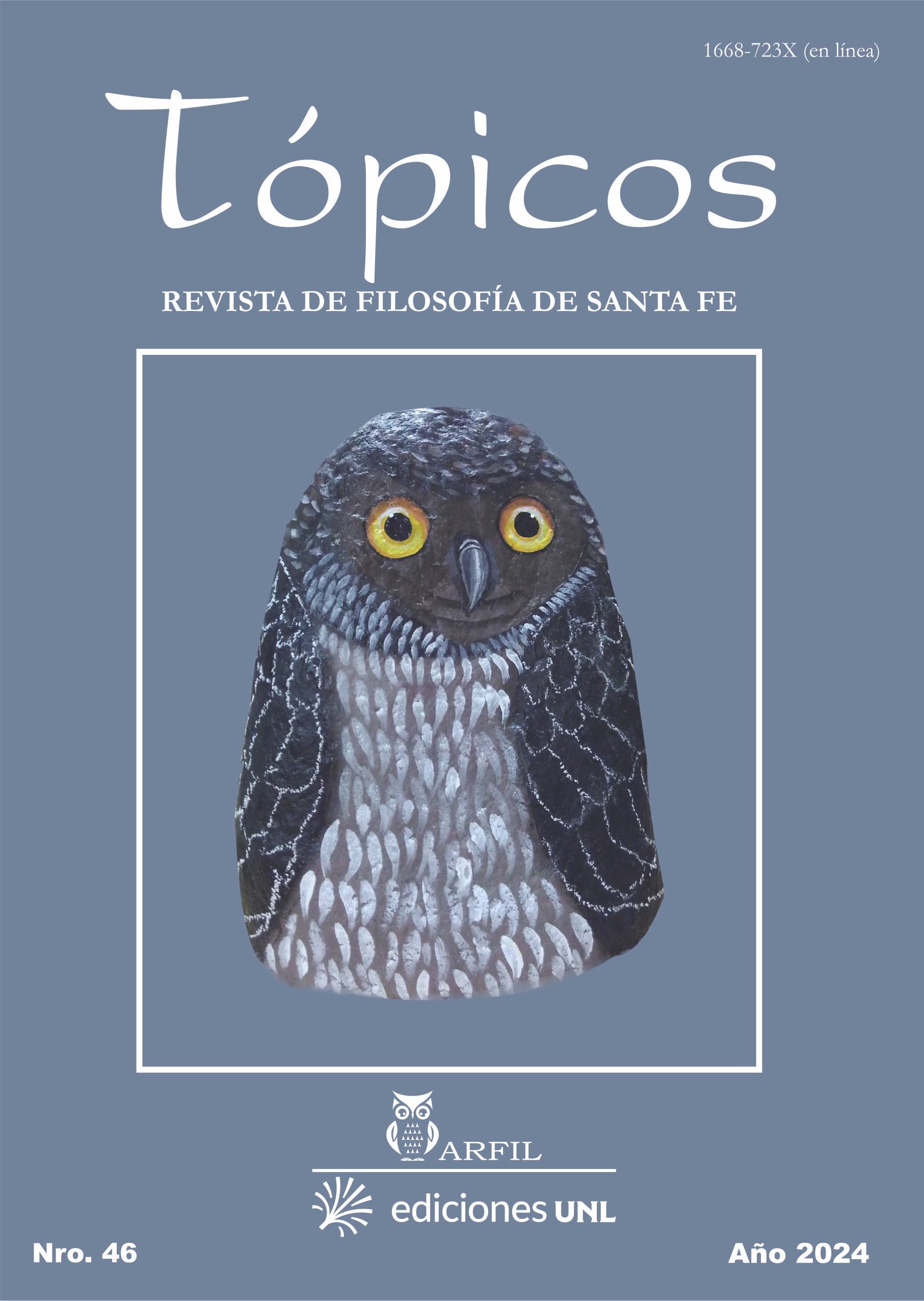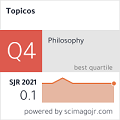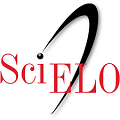Il non essere non è la differenza, ma l’apparenza
DOI:
https://doi.org/10.14409/topicos.2024.46.e0081Palabras clave:
Non essere, Apparenza, Phantasma, SofistaResumen
In questo saggio vorrei mostrare che Platone scrisse il Sofista per tematizzare una questione cruciale, che in tale dialogo è problematizzata per la prima volta: l’essere, la realtà delle cose, non si presenta a noi direttamente e chiaramente. Per comprendere la realtà delle cose, che sembra evidente e invece è sfuggente, è necessario inseguirla come una preda che si nasconde. Se è necessario cercare l’essere per catturarlo è perché spesso quel che cogliamo non è l’essere ma l’apparire. Il cuore del dialogo – la sezione sull’immagine – è la definizione dello statuto dell’apparenza. Il mio punto è che non è possibile spiegare la natura del non essere senza legare il discorso sul non essere al discorso sull’immagine. Nella sezione sull’immagine è presentata la natura contraddittoria dell’eidolon. Lo Straniero, che in questa sezione è il portavoce del sofista, gioca il ruolo dell’interrogante e conduce Teeteto ad ammettere che l’immagine non soltanto non è un ente, ma è il contrario dell’ente (Sph. 240b5-6). Quando, in Sph. 257b3-4, lo Straniero dice che “quando diciamo ‘non essere’ non diciamo qualcosa di contrario all’essere, ma soltanto di diverso da esso”, egli si riferisce – correggendolo – a ciò che il sofista ha detto nella sezione sull’immagine. Io credo che “ciò che è diverso dall’essere” sia precisamente l’apparire, il cui statuto aporetico è stato sottolineato nella sezione sull’immagine. La mia tesi è che il non essere è il phantasma, il darsi dell’essere alla percezione degli umani non direttamente, non chiaramente, non veramente, ma sotto una falsa sembianza.
Citas
Ambuel, D. (2011). The Coy Eristic: Defining the Image that Defines the Sophist. In Plato’s Sophist. Proceedings of the Seventh Symposium Platonicum Pragense (pp. 278-310) edited by Aleš Havlíček and Filip Karfík. Česko.
Casertano, G. (1991). L’eterna malattia del discorso. Quattro studi su Platone. Liguori.
Casertano, G. (1996). Il nome della cosa. Linguaggio e realtà negli ultimi dialoghi di Platone. Loffredo.
Cordero, N. L. (1993). Platon, Le Sophiste. Flammarion.
Dixsaut, M. (2022). Platon, Le Sophiste. Introduction, traduction, notes et commentaire par Monique Dixsaut. Vrin.
Greenstine, A. J. (2019). Accounting for Images in the Sophist. In Plato and the Moving Image, edited by Shai Biderman and Michael Weinman (pp. 19-34). Brill.
Jenks, R. (2011). How The images in Plato’s dialogues develop a life of their own. When His Poetry Trumps His Philosophy, Lewiston. Mellen Press.
Marcos de Pinotti, G. (2009). La naturaleza de la phantasía platónica. Phantasía como “mezcla de sensación y juicio”. In Marcos, G. E. y Díaz, M. E. (eds.), El surgimiento de la phantasía en la Grecia clásica. Parecer y aparecer en Protágoras, Platón y Aristóteles (pp. 123-168). Prometeo.
Marcos de Pinotti, G. (1995). Platón ante el problema del error. La formulación del Teeteto y la solución del Sofista. FUNDEC.
Marcos de Pinotti, G. (1997). Discurso y no ser en Platón (Sofista 260a-263d), Synthesis, vol. 4, 61-83.
Marcos de Pinotti, G. (2005). Platon, son père Parménide et l’heritage sophistique. In Fattal, M. (ed.), La philosophie de Platon, Tome II (pp. 237-268). L’Harmattan.
Marcos de Pinotti, G. (2006a). Algunos aspectos de la crítica platónica al arte imitativo. La analogía entre el sofista y el pintor, Hypnos, 11 (16), 74-88.
Marcos de Pinotti, G. (2006b). La crítica platónica a oradores, poetas y sofistas. Hitos en la conceptualización de la mímesis, Estudios de Filosofía, 4, 9-27.
O’Brien, Denis. (1995). Le non-être. Deux études sur le Sophiste de Platon, Academia Verlag.
Owen, G. E. L. (1971). Plato on not-being. In Plato: A Collection of Critical Essays: I Metaphysics and Epistemology, ed. by Gregory Vlastos. Doublday Anchor, 223-267.
Notomi, N. (1999). The Unity of Plato´s Sophist. Between the Sophist and the Philosopher. Cambridge University Press.
Palumbo, L. (1994). Il non essere e l'apparenza: sul Sofista di Platone. Loffredo.
Palumbo, L. (2008). Mimesis. Rappresentazione, teatro e mondo nei dialoghi di Platone e nella Poetica di Aristotele. Loffredo.
Palumbo, L. (2019). Gorgia demiurgo della credenza. In La forza del logos. Gorgia a 2500 anni dalla nascita, a cura di Rosa Loredana Cardullo & Francesco Coniglione (pp. 179-197). Bonanno.
Pimenta Marques, M. (2006). Platão, pensador da differença. Uma leitura do Sofista. UFMG.
Porter, J. (2010). Plato and the Platonic Tradition: The Image Beyond the Image. The Yearbook of Comparative Literature 56, pp. 75–103.
Vasiliu, A. (2008). Dire et voir. La parole visible du Sophiste. Vrin.
Vasiliu, A. (2014). Le même, l’autre et les images. Une lecture de la division des genres dans le Sophiste, Philosophia, 44, pp. 95-136.
Publicado
Cómo citar
Número
Sección
Licencia
Derechos de autor 2024 Lidia Palumbo

Esta obra está bajo una licencia internacional Creative Commons Atribución-NoComercial-CompartirIgual 4.0.
















